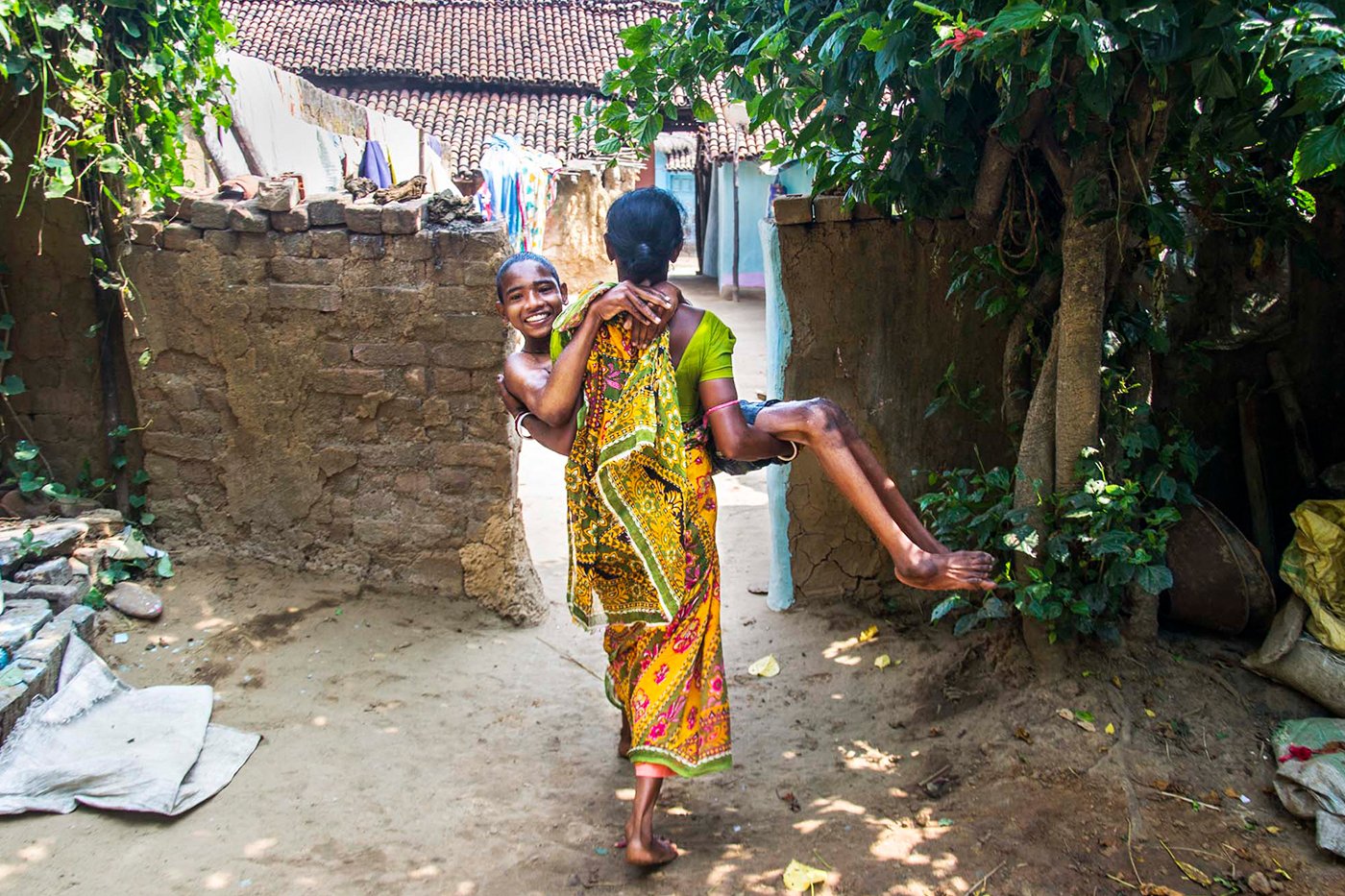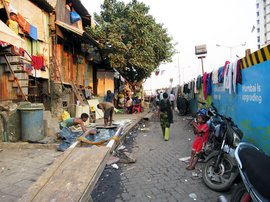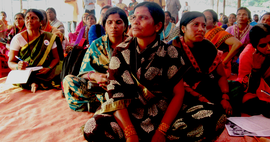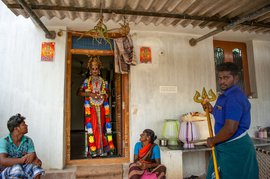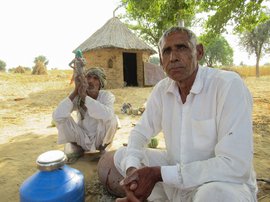Sanjay Gope has been in a wheelchair all his life. I met him in Bango, a village around six kilometres from the Uranium Corporation of India Limited’s (UCIL) mine in Jaduguda town (listed as Jadugora in the Census), in Purbi (East) Singhbhum district of Jharkhand.
UCIL, a government of India entity, dug its first mine here in 1967. The ore processed in Jaduguda and six other nearby mines is converted into yellowcake (a mixture of uranium oxides) and sent to the Nuclear Fuel Complex in Hyderabad.
When he was two, Sanjay’s worried parents took him to the UCIL hospital because he hadn’t started walking. His father is a daily wage labourer, his mother works in the paddy fields – as do most of the people in these villages. A few work in the UCIL mines – others say they were promised jobs that didn’t come their way. The doctors assured Sanjay’s parents that they had no cause for worry. So they waited patiently, but their son never took his first steps – or any steps.
Sanjay, now 18 years old, is among many children in Bango – a village of around 800 people (Census 2011) – most of them from the Santal, Munda, Oraon, Ho, Bhumij and Kharia tribes – who were born with congenital deformities – or died because of them. According to a 2007 study by a group called Indian Doctors for Peace and Development, the number of children dying from such defects was 5.86 times higher in villages close to the mine (0-2.5 kilometres) than those in settlements 30-35 kilometres away.
Women in these villages have reported a high number of miscarriages. Diseases like cancer and tuberculosis have killed many who worked in the mines or lived near the processing plants and ‘tailing ponds’ (deposits of toxic slurry left over from processing uranium ore).
Indian and international scientists have for long said that these deformities and diseases are linked to high radiation levels and radioactive debris. Settlements around toxic tailing ponds, they say, are particularly vulnerable because villagers inevitably come into contact with these waters. However, UCIL says on its website that “the diseases…. are not due to radiation but attributed to malnutrition, malaria and unhygienic living conditions, etc [in the villages].”
UCIL has seven mines in East Singhbhum – in Jaduguda, Bhatin, Narwapahar, Bagjata, Turamdih, Mahuldih, and Banduhudang. The issue of the lethal effects of radiation here has come up in court cases, including a public interest litigation in the Supreme Court. In 2004, a three-judge SC bench dismissed the PIL, reportedly relying on an affidavit filed by the Atomic Energy Commission, which stated that “adequate steps have been taken to check and control the radiation out of the uranium waste.” People’s movements in and around Jaduguda, such as the Jharkhandi Organisation Against Radiation, have for long tried to highlight the heavy price villagers are paying for their country’s need for uranium.

The hills of Jaduguda have been mined for uranium for five decades – creating half a century of a toxic legacy in the surrounding villages.

An open-cast mine in Turamdih (around 20 kilometres from Jaduguda); people live barely 500 metres away. In a 1998 report, the environment committee of the Bihar Legislative Assembly had stated that no village should be within five kilometres of the mine’s dumping ground.

Amit Gope, around 7, from Kalikapur village, was born with a mental disorder. He doesn’t walk or talk, and rests on his cot most of the day.

Children play on a mud road in Bango – not too far from toxic ore processing plants and waste dumps.

Kalibudhi Gope, 18, has a bone deformity and a hump on her upper back. She cannot stand for long, but goes to an intermediate college in Jamshedpur, around 35 kilometres away, twice a week.

Anamika Oram, 14, has a facial tumour that could become malignant. The doctors say it must be operated on, but her family cannot afford the surgery.

When I met Tarak Das, 35, at his grocery shop in Kalikapur, he asked me when his family would get help. “Dada, I have two children, one daughter, one son,” he said. “I worry all the time – when I cannot work any longer, what will happen to them? My waist hurts a lot if I stand even for a short while, but I have to work for my children.”

This tailing pond contains radioactive waste from the uranium processing plant. It passes by a hamlet near the Turamdih mine.

Haradhan Gope, 18, has a facial deformity and his head is small in proportion to his body. Still, he works in the fields, helping his father cultivate paddy.

A young boy collects shellfish from the Subarnarekha river near Jaduguda. Its aquatic life is slowly vanishing because of the toxic waste from the tailing ponds, which pours directly into the river.

Parbati Gope (centre), around 18, at private coaching centre in Bango; her father is a farmer. “I want to do a government job,” she says. “But I don’t have all the books to study from. My father tells me it is hard to run the family, so how can he afford my treatment?”

Rakesh Gope, around 16, has cerebral palsy; his sister Gudia died at the age of seven. He struggles to go to school on his wheelchair, where he gets a mid-day meal and a government disability pension of Rs. 600 a month. His mother tells me, “I always think about the future… what will happen in our absence? He cannot do anything on his own."

Rakesh and Gudia's mother [name unavailable], who works as a labourer on paddy fields, holds out an image of her seven-year-old daughter, who had a bone deformity and died after an epileptic episode. Her son also has cerebral palsy. She says, “After Rakesh was born, when we learnt that he will never walk or be able to anything on his own, we felt very sad. When Gudia was born, we felt happy, but we soon found that that she too would never walk…”

Rakesh cannot move his legs at all. His mother bathes him every day and then takes him back into their house in Bango.
